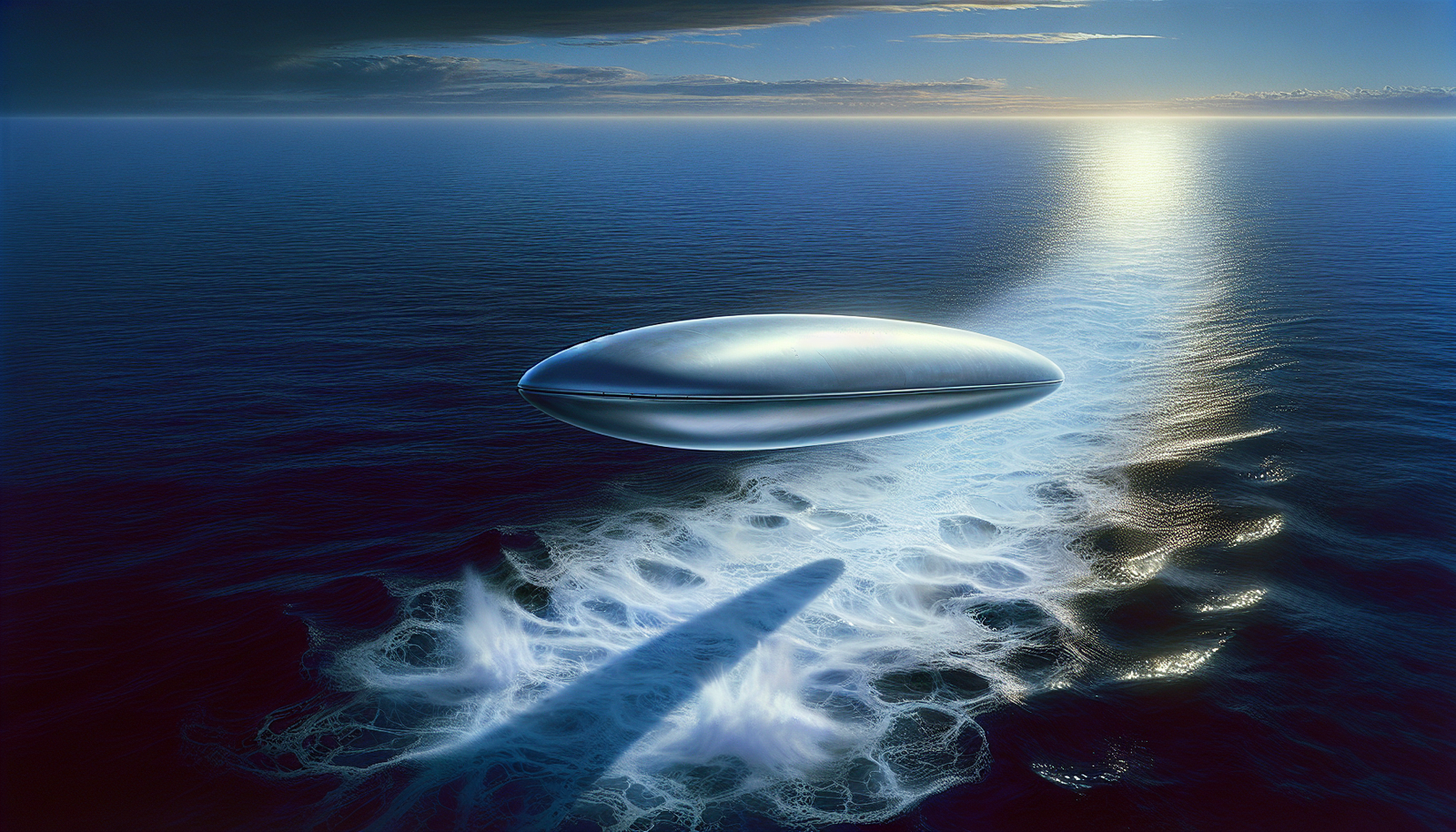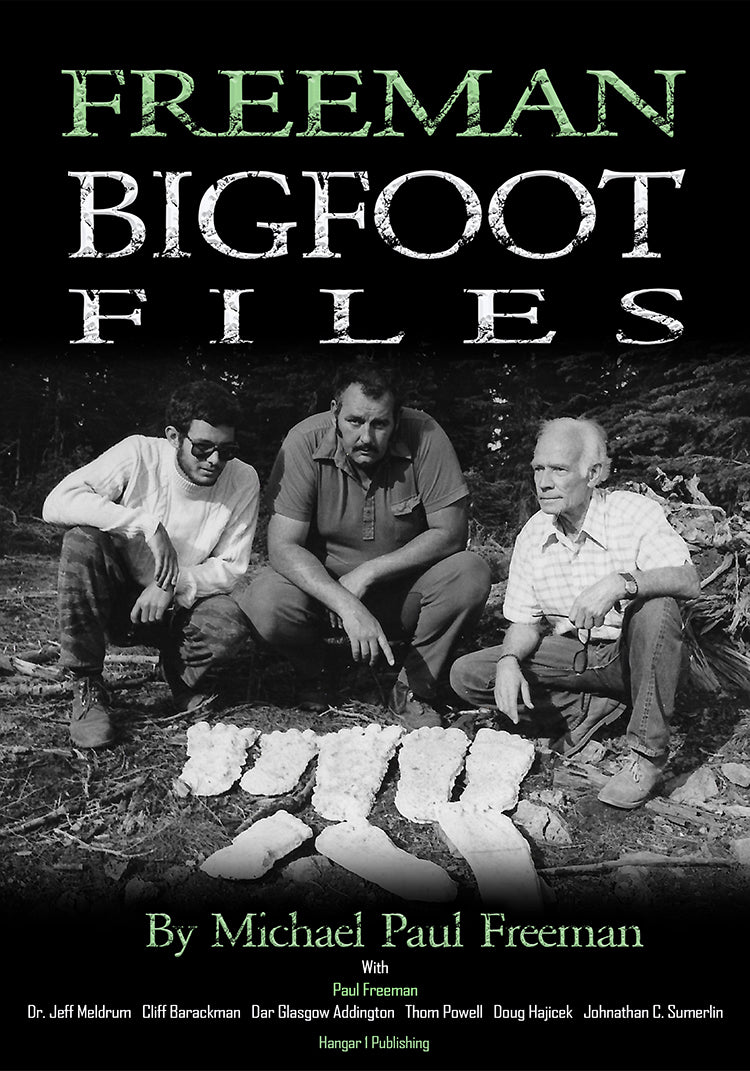Unexplained Aerial Phenomena: What We Know Now

By Malcolm Blackwood, Ufologist
When U.S. Navy pilot Alex Dietrich spotted something unusual off the California coast in 2004, she couldn't have predicted it would eventually transform how our government approaches unexplained objects in our skies. The white, oblong "Tic Tac" she and her colleagues encountered defied explanation—it lacked visible propulsion systems yet moved with extraordinary capabilities beyond any known aircraft.
For decades, such sightings were dismissed, ridiculed, or hidden behind classified barriers. Today, they're the subject of Pentagon task forces, NASA studies, and Congressional hearings. This remarkable shift represents one of the most significant reversals in how we approach mysteries in our airspace.
The facts surrounding these phenomena, pieced together from official reports, witness testimonies, and declassified materials, reveal a complex reality that's neither as mundane as skeptics claim nor as sensational as portrayed in science fiction. What we now call Unexplained Aerial Phenomena (UAPs) represent genuinely puzzling occurrences that deserve serious scientific and security attention.
From "Flying Saucers" to "UAPs": The Evolution of Terminology
The modern era of mysterious aerial objects began in 1947 when businessman Kenneth Arnold reported seeing nine high-speed objects near Mount Rainier in Washington. When Arnold described them as moving "like saucers skipping on water," newspapers coined the term "flying saucers" that would capture public imagination for decades.
By 1952, the U.S. Air Force had established Project Blue Book and formally introduced the term "UFO" (Unidentified Flying Object). This terminology served for nearly 70 years until 2020, when the Pentagon deliberately shifted to "Unidentified Aerial Phenomena" or UAP.
"The term UAP brings science to the issue," explains aerospace engineer Iain Boyd from the University of Colorado Boulder. This change wasn't merely cosmetic—it represented an intentional effort to reduce the stigma associated with reporting. By 2022, the terminology expanded again to "Unidentified Anomalous Phenomena," encompassing objects not just in the air but also in space and underwater.
This seemingly small shift in language actually signaled a profound change in approach. By moving away from terminology associated with aliens and conspiracy theories, official agencies created space for pilots, military personnel, and scientists to engage with the topic without fear of ridicule.
The "Tic Tac" and Beyond: Notable UAP Encounters
The 2004 USS Nimitz incident stands as perhaps the most compelling documented UAP case. Navy Lieutenant Alex Dietrich was flying F-18 Super Hornets during a routine training exercise when she and three colleagues were redirected to intercept an unknown contact.
"It was the middle of the day, clear blue skies, calm waters," Dietrich recounted. They observed a disturbance in the otherwise tranquil ocean, above which hovered a white object shaped like a breath mint. "It was moving in a way that we couldn't recognize. It didn't have our turn radius or our acceleration," she explained.
What makes this case particularly significant is the multiple forms of evidence: visual confirmation from trained military pilots, sophisticated radar tracking, and forward-looking infrared (FLIR) camera footage. Despite this wealth of data, the incident remains unexplained after nearly two decades.
Space has yielded equally puzzling observations. In 2020, Russian cosmonaut Ivan Vagner was recording the southern lights from the International Space Station when his camera captured what appeared to be a formation of five unidentified objects moving in unison before suddenly disappearing. This wasn't an isolated incident—in 2005, American astronaut Leroy Chiao reported seeing a similar formation during a spacewalk.
More recently, February 2023 brought a series of incidents that captured national attention. Following the shootdown of a Chinese surveillance balloon over U.S. territory, military jets intercepted three additional unidentified objects in North American airspace within a week. While these objects were likely not extraterrestrial, they highlighted the gaps in our airspace awareness and the challenges in identifying even relatively mundane objects under certain conditions.
From Denial to Disclosure: The Government Response
For decades, the official stance on unexplained aerial sightings ranged from dismissive to actively debunking. Project Blue Book, which ran from 1952 to 1969, examined more than 12,000 reported sightings before concluding that UFOs posed no threat to national security and showed no evidence of extraterrestrial origin. The program's termination effectively ended formal government investigation for nearly 40 years.
What many didn't know was that behind the scenes, interest continued. The Advanced Aerospace Threat Identification Program (AATIP), a secret Pentagon program that ran from 2007 to 2012, investigated UAPs away from public scrutiny.
The watershed moment came in December 2017, when The New York Times published an article confirming AATIP's existence and the Pentagon subsequently released three videos recorded by Navy pilots showing unexplained objects. This disclosure fundamentally altered the conversation, moving UAPs from fringe interest to mainstream concern.
Congressional pressure mounted, resulting in a June 2021 report from the Office of the Director of National Intelligence (ODNI). This preliminary assessment examined 144 UAP reports from U.S. government sources between 2004 and 2021. Remarkably, investigators could explain only one case—identified as "a large, deflating balloon." The report found that 18 incidents featured objects that "appeared to remain stationary in winds aloft, move against the wind, maneuver abruptly, or move at considerable speed, without discernible means of propulsion."
Following this report, the Department of Defense established the All-domain Anomaly Resolution Office (AARO) in July 2022, tasked with investigating UAPs. Director Sean Kirkpatrick has stated that while AARO has collected over 800 reports, only a small percentage—between 2% and 5%—remain "truly anomalous" after investigation.
In parallel, NASA launched its own independent study in 2022, appointing a 16-member expert panel to examine how the agency could contribute to UAP research. Their report, released in September 2023, emphasized the need for better data collection methods and called for NASA to take a more prominent role in the scientific study of these phenomena.
The Science of Studying the Unknown
"The language of scientists is data," explains NASA's report. Yet good data about UAPs is notoriously difficult to obtain. Many sightings occur unexpectedly, without specialized equipment ready to document them. When footage or sensor data does exist, it's often of limited quality or lacks crucial context.
Josh Semeter, a space physicist who served on NASA's UAP committee, demonstrates how infrared camera footage—a common source of UAP imagery—can create misleading impressions. Standard features like the "unsharp mask" filter can create apparent "auras" around objects. Meanwhile, the parallax effect (the same phenomenon that makes your thumb appear to move when you close one eye and look past it) can create the illusion of objects moving at impossible speeds when it's actually the observer or camera that's moving.
Despite these challenges, scientists are developing promising approaches. Triangulation from multiple observers represents a powerful analytical tool—if witnesses observe an object from different locations, researchers can use basic trigonometry to calculate its altitude, size, and velocity.
Several research teams are creating dedicated instrument packages specifically designed for UAP detection. These range from elaborate systems featuring wide-field cameras, radio antennas, microphones, and sophisticated computing capabilities to simpler portable packages that can be rapidly deployed to locations where UAPs are frequently reported.
Beyond the Sky: UAPs Across Domains
While most attention focuses on aerial phenomena, the expanded definition of UAPs now includes objects in space and underwater. This multi-domain approach reflects the complexity of these phenomena and the diverse environments where unexplained encounters occur.
Underwater UAPs, sometimes called USOs (Unidentified Submerged Objects), have puzzled naval personnel for decades. In 1978, the USS Stein (DE-1065) experienced increased sonar noise interference. Inspection revealed cuts and scratches on the protective coating of the sonar dome containing remnants of claws from what appeared to be a giant squid—though the claw size was substantially larger than any previously documented specimens.
In another case from 1976, a torpedo recovery boat conducting oceanographic research became entangled with a powerful unknown entity. After a struggle against the ship's winch, the crew pulled aboard a 15-foot, 750-pound creature that turned out to be the first-ever discovered megamouth shark, a species previously unknown to science.
Space-based observations add another dimension to UAP research. According to Pentagon data, 49 of 757 UAP reports collected between May 2023 and June 2024 occurred at altitudes of at least 62 miles—officially in space. Astronauts have reported strange sightings dating back to the beginning of the space age, including Jim McDivitt's 1965 observation during the Gemini 4 mission of a "cylindrical object with antennas sticking out."
Perhaps most intriguing are reports of "transmedium" objects—those capable of moving between domains, such as from air to water or vice versa. Such capabilities would represent extraordinary engineering achievements beyond current human technology, raising profound questions about their origin and nature.
A Global Phenomenon: International Approaches
While U.S. efforts have received the most attention, many countries around the world are developing their own approaches to UAP investigation.
China has its own official UAP investigatory body within the People's Liberation Army (PLA), which refers to UAPs as "Unidentified Air Conditions." According to researcher Chen Li of the PLA Air Force Early Warning Academy, China has turned to artificial intelligence to help analyze an increasing volume of reports.
In February 2023, China dealt with its own UAP incident near a major People's Liberation Army Navy base in Shandong Province, demonstrating that these phenomena are truly global in scope.
Japan's approach has evolved significantly. Under former Defense Minister Taro Kono, Japan established procedures for Self-Defense Forces pilots to document UAP sightings. Following the Chinese spy balloon incident, Defense Minister Yasukazu Hamada suggested that SDF assets should have permission to shoot down UAPs that could threaten civilian air traffic.
Canada announced its Sky Canada Project in February 2023, involving multiple government and civilian agencies to investigate UAPs. France maintains GEIPAN, one of the longest-running official government programs devoted to studying unexplained aerospace phenomena.
This international landscape shows that while approaches vary, many nations recognize the potential significance of UAPs for aviation safety and national security. Yet classification barriers and security concerns often limit information sharing between countries, hampering coordinated research efforts.
What Are They? Theories and Explanations
When confronted with UAP reports, the natural question is: what exactly are people seeing? The 2021 ODNI report outlined five potential explanatory categories:
- Airborne Clutter: Birds, balloons, recreational drones, or airborne debris that might confuse observers and sensors.
- Natural Atmospheric Phenomena: Ice crystals, moisture, and thermal fluctuations that can register on infrared and radar systems in unusual ways.
- U.S. Government or Industry Developmental Programs: Classified programs by U.S. entities, though the report couldn't confirm this explanation for any specific cases.
- Foreign Adversary Systems: Technologies potentially deployed by nations like China or Russia, or by non-governmental entities.
- Other: A catch-all category for phenomena that remain unexplained due to limited data or analytical challenges.
The vast majority of UAP reports, when sufficient data is available, turn out to have conventional explanations. AARO has successfully identified hundreds of cases as ordinary objects, including balloons, birds, drones, and aircraft.
However, a small percentage remain genuinely puzzling even after rigorous investigation. These cases have fueled more speculative theories about their origin.
The extraterrestrial hypothesis—that some UAPs represent visitation by intelligent beings from other planets—remains popular in public discourse. A 2021 Pew Research poll found that roughly two-thirds of Americans believe intelligent aliens exist on other planets, and 51% think the UFOs identified by the U.S. military are either definitely or probably evidence of alien technologies.
Scientists and government officials remain cautious about this explanation. NASA's UAP study team stated clearly that "there is no conclusive evidence suggesting an extraterrestrial origin for UAP" in peer-reviewed scientific literature. Similarly, AARO Director Jon Kosloski has emphasized that "AARO has discovered no evidence of extraterrestrial beings, activity or technology."
Another intriguing theory mentioned in scientific circles is the "time-traveler hypothesis" or "extratempestrial model." This suggests that UAPs might be piloted not by aliens, but by future humans using advanced technology to visit their own past. While this idea has gained some attention, scientists generally consider it highly implausible given current understanding of physics.
Overcoming Barriers: Stigma and Reporting
Perhaps the most significant obstacle to understanding UAPs has been the powerful stigma surrounding the topic. For decades, pilots and military personnel who reported unusual aerial phenomena risked ridicule, psychiatric evaluation, or career damage.
Ryan Graves, a former Navy pilot who testified before Congress, explained that "the stigma attached to UAP is real and powerful and challenges national security." This stigma, he noted, "silences commercial pilots who fear professional repercussions, discourages witnesses, and is only compounded by recent government claims questioning the credibility of eyewitness testimony."
Alex Dietrich, who encountered the "Tic Tac" UAP in 2004, expressed frustration with the lack of follow-up after her experience. Despite multiple witnesses and sophisticated sensor data, the military responded with "a collective shrug and said that was weird. Okay, back to work."
Recent efforts to reduce this stigma have shown progress. Deputy Secretary of Defense Kathleen Hicks issued a memo emphasizing that "It is equally critical that all U.S. military aircrews or government personnel report whenever aircraft or other devices interfere with military training. This includes the observation and reporting of UAPs."
AARO launched a new reporting mechanism in 2023 specifically for current and former military members, federal employees, and contractors to report UAP encounters or knowledge of related government programs. These initiatives represent a significant shift from historical approaches that discouraged reporting.
Why UAPs Matter
Unexplained Aerial Phenomena represent more than just a fascinating mystery—they sit at the intersection of national security, aviation safety, scientific inquiry, and human curiosity about the unknown.
From a national security perspective, unidentified objects in restricted airspace could potentially represent foreign surveillance systems or novel adversary technologies. The Chinese spy balloon incident of February 2023 demonstrated the reality of such threats. As Pentagon officials have emphasized, reports of UAPs near military installations must be taken seriously and investigated thoroughly.
For aviation safety, unidentified objects pose potential collision risks to both military and civilian aircraft. Several near-misses between aircraft and UAPs have been reported, highlighting the practical importance of identifying and tracking these phenomena. Improving reporting systems could help pilots communicate potential hazards more effectively, potentially preventing accidents.
Scientifically, the study of unexplained phenomena aligns with the fundamental mission of expanding human knowledge. As NASA Administrator Bill Nelson put it, "Exploring the unknown in space and the atmosphere is at the heart of who we are." Even if most UAP cases ultimately have prosaic explanations, the process of investigation might yield new insights about atmospheric physics, sensor technology, or human perception.
Throughout history, humans have looked to the skies with wonder, attempting to make sense of phenomena they didn't understand. Today's UAP research represents a more sophisticated continuation of that ancient impulse—a desire to push the boundaries of knowledge and comprehend the mysteries that surround us.
From Bigfoot to UFOs: Hangar 1 Publishing Has You Covered!
Explore Untold Stories: Venture into the world of UFOs, cryptids, Bigfoot, and beyond. Every story is a journey into the extraordinary.
Immersive Book Technology: Experience real videos, sights, and sounds within our books. Its not just reading; its an adventure.


























